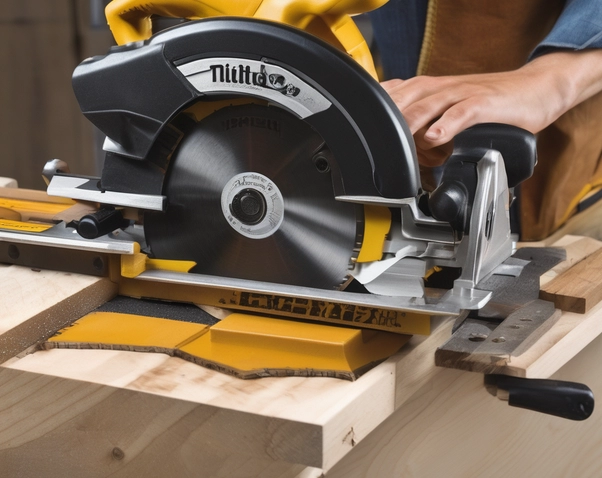
Understanding the Circular Saw: A Versatile Tool for Cutting
The circular saw, a staple in many workshops and construction sites, is a powerful tool capable of cutting through a wide variety of materials. Its circular blade, spinning at high speeds, provides a clean and efficient cut. While often associated with woodworking, the circular saw can be used for a variety of tasks, from cutting lumber to trimming metal and even slicing through tile.
Basic Anatomy of a Circular Saw
A typical circular saw consists of the following components:
- Base plate: The flat surface that rests against the material being cut.
- Blade guard: A protective shield that covers the blade when not in use.
- Depth adjustment: A mechanism that allows you to control the depth of the cut.
- Bevel adjustment: A feature that enables you to make angled cuts.
- Motor: The power source that drives the blade.
- Blade: The circular cutting tool.
Types of Circular Saws
While the basic design remains consistent, there are several variations of circular saws available to suit different needs:
- Corded circular saw: The most common type, powered by an electrical cord.
- Cordless circular saw: Battery-operated for portability and convenience.
- Table saw: A stationary circular saw mounted on a table for more precise and controlled cuts.
- Circular saw blade: A variety of blades are available for different materials, including wood, metal, and tile.

Common Uses for a Circular Saw
The versatility of the circular saw makes it an indispensable tool for many projects. Here are some of its most common applications:
- Woodworking:
- Cutting lumber to size for cabinets, furniture, and other projects.
- Trimming boards for a clean finish.
- Making angled cuts for mitered joints.
- Construction:
- Cutting framing lumber for walls, floors, and roofs.
- Making precise cuts for doors, windows, and trim.
- Cutting plywood and other sheet materials.
- Metalworking:
- Cutting thin sheets of metal for various applications.
- Trimming metal pipes and tubing.
- Tile cutting:
- Cutting ceramic and porcelain tiles for flooring and backsplashes.
- Demolition:
- Cutting through wood, metal, and other materials during demolition projects.
Safety Tips for Using a Circular Saw
While the circular saw is a powerful tool, it can also be dangerous if not used properly. Always follow these safety guidelines:
- Wear appropriate safety gear: This includes safety glasses, hearing protection, and work gloves.
- Inspect the tool before use: Ensure that the blade is sharp and securely attached.
- Use a sturdy work surface: A stable work surface will help prevent accidents.
- Maintain a firm grip on the saw: Avoid losing control of the tool.
- Keep the blade away from your body: Never place your hands near the blade while it is running.
- Cut with the grain: This will produce a cleaner and easier cut.
- Avoid forcing the saw: Let the blade do the work.
- Unplug the saw when not in use: This will prevent accidental starts.
Deck building
Here’s a comprehensive guide to deck building, incorporating visual aids and addressing potential questions:
Planning Your Deck
- Design: Consider your desired size, shape, and style.
- Materials: Choose between wood (pressure-treated, cedar, redwood), composite, or vinyl.
- Permits: Check local regulations for any necessary permits.
- Budget: Set a realistic budget for materials, labor, and permits.
Preparing the Site
- Clear the area: Remove any debris, plants, or structures.
- Level the ground: Ensure a level surface for the deck.
- Excavate for footings: Dig holes for the footings based on local codes and soil conditions.
Building the Foundation
- Install footings: Pour concrete into the footings and allow them to cure.
- Set posts: Attach post bases to the footings and erect the posts.
- Add beams and joists: Connect beams to the posts and attach joists to the beams.
Laying the Deck Boards
- Start at a corner: Begin laying the deck boards from a corner, ensuring they’re spaced evenly.
- Secure the boards: Fasten the boards to the joists using screws or nails.
- Cut and fit the last board: Measure and cut the final board to fit the space.
Adding Railings and Stairs
- Install railings: Attach railings to the perimeter of the deck for safety.
- Build stairs: Construct stairs leading to and from the deck, following local building codes.
Finishing Touches
- Apply sealant or stain: Protect the wood from the elements with a sealant or stain.
- Add decorative elements: Personalize your deck with planters, lighting, or other accessories.
Additional Tips:
- Safety first: Wear appropriate safety gear, including gloves, eye protection, and a hard hat.
- Follow building codes: Ensure your deck complies with local regulations.
- Consider professional help: If you’re unsure about any aspect of deck building, consult a professional contractor.
- Enjoy your new outdoor space!
Frequently Asked Questions:
- How much does it cost to build a deck? The cost varies depending on size, materials, and location.
- Can I build a deck myself? With proper planning and knowledge, you can build a deck yourself. However, if you’re unsure, consider hiring a professional.
- How long does it take to build a deck? The time required depends on the size and complexity of the deck.
- What type of wood is best for decks? Pressure-treated wood, cedar, and redwood are popular choices for decks.
- Do I need a permit to build a deck? Check local regulations to determine if a permit is required.

Choosing the Right Circular Saw for Your Needs
When selecting a circular saw, consider the following factors:
- Power: The power of the motor determines how quickly and efficiently the saw can cut through materials.
- Blade size: The blade diameter affects the cutting capacity of the saw.
- Features: Some saws have additional features, such as laser guides or dust collection systems.
- Portability: If you need to move the saw around frequently, a cordless model may be more convenient.
- Budget: Circular saws vary in price, so it’s important to set a budget before shopping.
Proper use of personal protective equipment
Personal Protective Equipment (PPE) is essential for safeguarding workers from workplace hazards. However, its effectiveness depends on proper use, storage, and maintenance. By following these guidelines, Here’s a guide to ensure you’re using PPE correctly:
Understanding PPE
- Identify Hazards: Assess your workplace for potential hazards like chemicals, physical hazards, biological agents, or electrical dangers.
- Select Appropriate PPE: Choose PPE specifically designed to protect against the identified hazards.
- Fit and Comfort: Ensure the PPE fits properly and comfortably. An ill-fitting item can be ineffective and even dangerous.
Proper Use and Maintenance
- Training: Provide comprehensive training to workers on the correct use, storage, and maintenance of PPE.
- Inspection: Regularly inspect PPE for damage, wear, or contamination. Replace or repair items as needed.
- Cleaning and Disinfection: Clean and disinfect PPE according to manufacturer’s instructions.
- Storage: Store PPE in a clean, dry, and secure location.
- Expiration Dates: Check for expiration dates and replace PPE accordingly.
Specific Types of PPE and Their Proper Use
- Respiratory Protection:
- Respirators must fit properly to be effective.
- Follow manufacturer’s instructions for donning, doffing, and cleaning.
- Use the appropriate respirator for the specific hazard.
- Eye Protection:
- Safety glasses, goggles, or face shields should be worn when there’s a risk of flying particles, chemicals, or radiation.
- Ensure the eye protection fits properly and provides adequate coverage.
- Hearing Protection:
- Earplugs or earmuffs should be used in noisy environments.
- Choose the right protection based on noise levels.
- Ensure a proper fit and seal.
- Hand Protection:
- Gloves should be selected based on the specific hazard, such as chemicals, cuts, or abrasions.
- Inspect gloves for damage before each use.
- Properly clean or disinfect gloves after use.
- Body Protection:
- Aprons, coveralls, or suits should be worn to protect the body from chemicals, biological agents, or physical hazards.
- Ensure the clothing is appropriate for the specific hazard and fits properly.
Additional Considerations
- Hierarchy of Controls: PPE is often the last line of defense. Prioritize engineering controls (e.g., ventilation) and administrative controls (e.g., safe work procedures) to eliminate or reduce hazards.
- Cultural Considerations: Be mindful of cultural factors that may influence PPE acceptance or use.
- Emergency Preparedness: Have a plan in place for emergency situations involving PPE, such as decontamination procedures.
By following these guidelines, you can ensure that your employees are properly protected and minimize the risk of workplace injuries.

The circular saw is a versatile tool that can be used for a wide range of tasks. Whether By understanding its basic components, types, and safety guidelines, you can use this tool effectively and safely in your projects. Whether you’re a professional contractor or a DIY enthusiast, the circular saw is an essential addition to your tool kit.




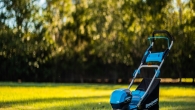

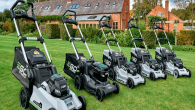


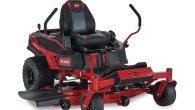
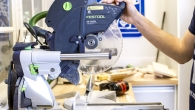
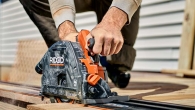
Leave a Reply